How Diaja carved a path to conceptual photography success
Conceptual photographer Diaja describes her path to success in the fine art photography business
• March 2020 issue
Unfailing confidence
Ceres Henry was walking with a friend in Harlem one day three years ago when they passed by the recently opened X Gallery. Henry, artistically known as Diaja, was then a fledgling photographer and told her friend, “Let me just pop in and see.”
“The curator [Lisa DuBois] was there, and I just walked up and said, How can I get my work into this gallery?” Diaja didn’t have her portfolio with her but showed DuBois some of her images on Instagram. “And she was oh-my-god blown away: ‘You have to come back and have a meeting.’”
This threshold moment for Diaja, now 35 and an income-generating conceptual photographic artist, seems random, but it’s typical of her career path. Even many of her subjects seem to have evolved rather than been chosen. Yet always there is intent at every step guided by an unfailing confidence in what she can do—or, perhaps more acutely—what she wants to do.
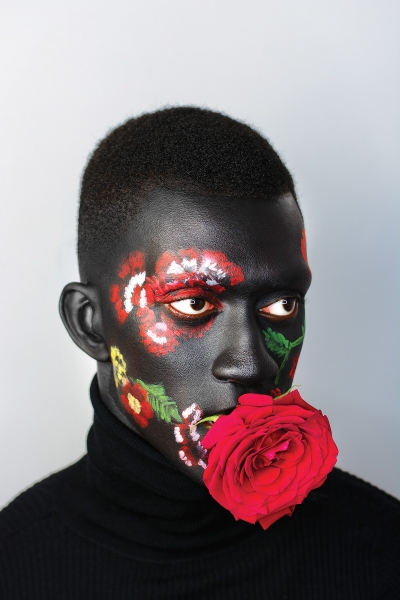
Diaja’s portraits feature black men and black women adorned with face-painted flowers, which she applies herself. Often, they are posed with real flowers. This motif of chronicling the black experience using flora’s vivid colors juxtaposed with the subjects’ skin tones is a common thread, but her photographic techniques vary from series to series. “I found out I like conceptual photography, building a body of work around one subject,” she says. “This is what I want to do, this is what I want to be known for.”
She also wants to sell her art. She puts her imagination and skills on display and steadfastly believes in the monetary value of her work. “At the end of the day, it’s not really about money but about being able to support myself with my work,” she says. “Business and art come hand in hand. Otherwise, it’s just a hobby.”
ENTREPRENEURIAL
Growing up in Harlem, Diaja comes from a family of artistic entrepreneurs. Her father, musician Warren Henry, is a producer who owns his own studio and also plays piano and drums, mostly jazz. Her mother, Michele Henry, was a dancer and now teaches science.
Warren Henry is also a photographer, and it was this path that both Diaja and her brother, Theo, now follow. “I went out with my dad shooting, and he said I had a natural eye,” Diaja says. She claims she didn’t pick up her father’s technical acumen—“All I know is my lens,” she says—but she did start out with film and darkroom experience, and she arrives at her arrestingly detailed images through much experimentation and practice with lights and angles.
It wasn’t her father’s camera but a tracing book he gave her when she was in grade school that set her on her current path. “I was just so engrossed in that tracing book and wrapped up in drawing. I love to draw. I remember telling my parents, I’m going to be a painter.” However, drawing models turned her interest toward fashion. She attended the Fashion Institute of Technology, earning an associate degree in pattern making and a bachelor’s in production management. She also took a photography course. Upon graduating, she established a line of handbags and apparel with her parents’ assistance. Her work drew media interest but didn’t sell. “I didn’t know how to market,” she says.
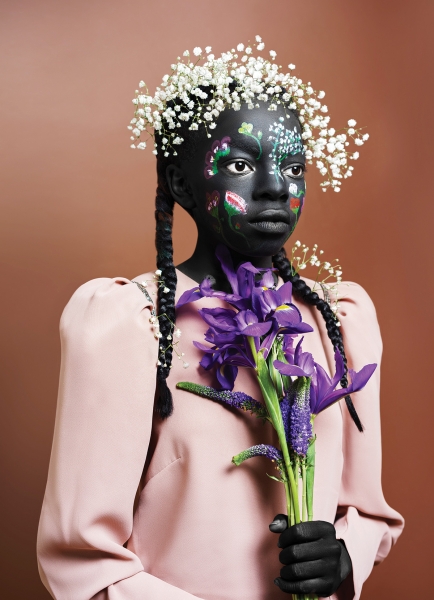
Diaja decided to rebrand herself as an artist and focus on photography incorporating her love for fashion and painting. She liked to experiment. During one session, she outfitted Senegalese model Alioune Badara Fall in a knit turtleneck then painted flowers on his face and placed a large red rose in his mouth. “In general, I love flowers,” she says. The key, however, was the model himself. Through Diaja’s lighting, the man’s intensely dark skin becomes an integral canvas to the image’s palette of bright reds, yellows, greens, and white. Meanwhile, his expressionless face turns what could be an image of whimsy into a somber contemplation on his blackness as both a thing of beauty and a stigma and the man himself as a victim of this socially applied juxtaposition.
In addition to posting her work on social media, Diaja began submitting her images to various outlets and getting published, including by Vogue Italia. She called her work the “Adam” series and began doing an “Eve” series featuring women. She took part in a Raw Artists show and sold some of her prints for $20. She then mounted her own solo “Adam and Eve” show at Tempo Rubato Gallery in Harlem, a birthday present to herself that included enlisting a public relations specialist to help promote the show. She priced her work at $500 and sold a few.
“OK, we have something here,” she told herself. Not only could she earn money with her work, but galleries could provide wide and substantial exposure for her art. “They have the manpower and guest list of people they can reach out to. And, in general, it’s a storefront, so people will pop in.”
As Diaja herself did at X Gallery. After meeting with Lisa DuBois, Diaja’s work was included in an exhibition called “Cultural Diversity: A Public Art Installation & Gallery Exhibition in Homage of Harlem’s Cultural Legacy,” a collaboration with the nonprofit organization Save Art Space. Out of that show, one of Diaja’s “Adam” images was selected for use in the ad space at bus stops in her neighborhood.
“That put me in the head space not only where I believed in myself even more, but I feel like I can just do whatever I set my heart to and work hard toward it.” Next up was a solo show at X Gallery, and Diaja knew she needed to create new work.
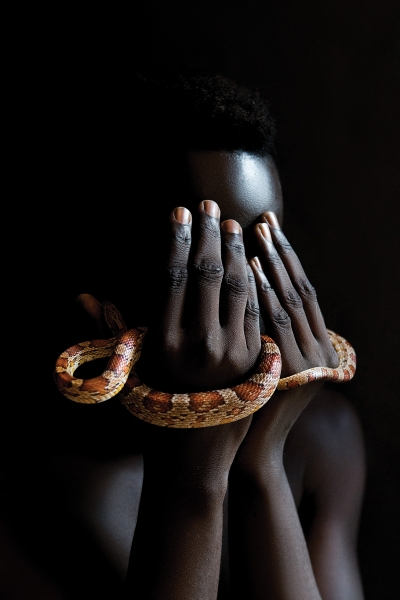
FIGURING IT OUT
On a visit to New York’s Metropolitan Museum of Art, she found inspiration in the Africa and Oceana exhibit. “I was so intrigued and inspired in the detail of the masks and statues and the meaning behind them.” Titled “We Are Our Ancestors,” Diaja’s exhibition featured images of a model painted black superimposed with an image of a mask from the museum. Each 13x19-inch image was printed on Canson Infinity Baryta Prestige paper and paired with an 8.5x11-inch image of the mask printed on Moab Slickrock Metallic Pearl 260 paper.
Diaja charged $2,000 for 20x30-inch metal prints of the images, which DuBois told her was too high. “I’m like, Let me do what I’m doing. Let me figure this out,” Diaja says.
“I believe in myself, I push myself, and I work toward that goal. If you believe in yourself, you’ve won half the battle. If you’re negative, negative becomes you. I want to be an artist who’s sold work for thousands of dollars; I want to be able to say that.” She can say it: One of her “We Are Our Ancestors” metal prints sold at the price she set during the exhibition’s run at X Gallery.
With most of her collectors based in Europe, Diaja recently signed with Artoui Munich, which discovered her when she was a Fine Arts Photography Awards nominee in the professional conceptual photography category.
Diaja’s portfolio features several series, ranging from “Mmmm,” which goes whimsical with flora as models engage with fruit in flirty poses, to “Black History,” a fashion shoot of black women that pushes back on the European standards of beauty. This notion is powerfully presented in a portrait of a woman being made up, with other models’ hands holding brushes, powder, eyeliner, and lipstick around her face. Another hand holds up a cell phone showing a white model, and Diaja positioned the phone’s screen so that the white model and black model create one face. But the black model is crying. “That’s real tears,” Diaja says. “I wanted to talk about whitewashing in my own way. I chose her as a model because of how dark-skinned she is, and I wanted her to be crying because she can’t be herself. The world doesn’t value her beauty because she’s too black, too dark. And the model really did begin to cry. It was a real moment, for her, for me, and for all the models in the room.”
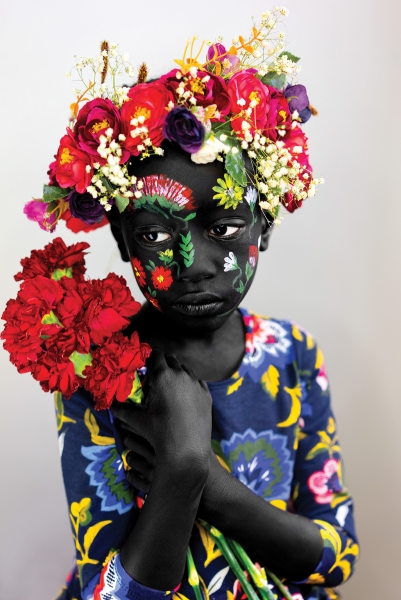
Learn how Diaja created her most popular "Eve" image.
Diaja has found her voice in her photography. “I definitely love talking about race and different things like that in my work.” She tackles the topic from a positive perspective by creating images that focus on beauty: the beauty of black, the beauty of flowers, the beauty of art for art’s sake.
“I want people to look at these black images in admiration. I want to portray positive images that counter stereotypes.”
RELATED: A gallery of Diaja's images
Eric Minton is a writer and editor in Washington, D.C.

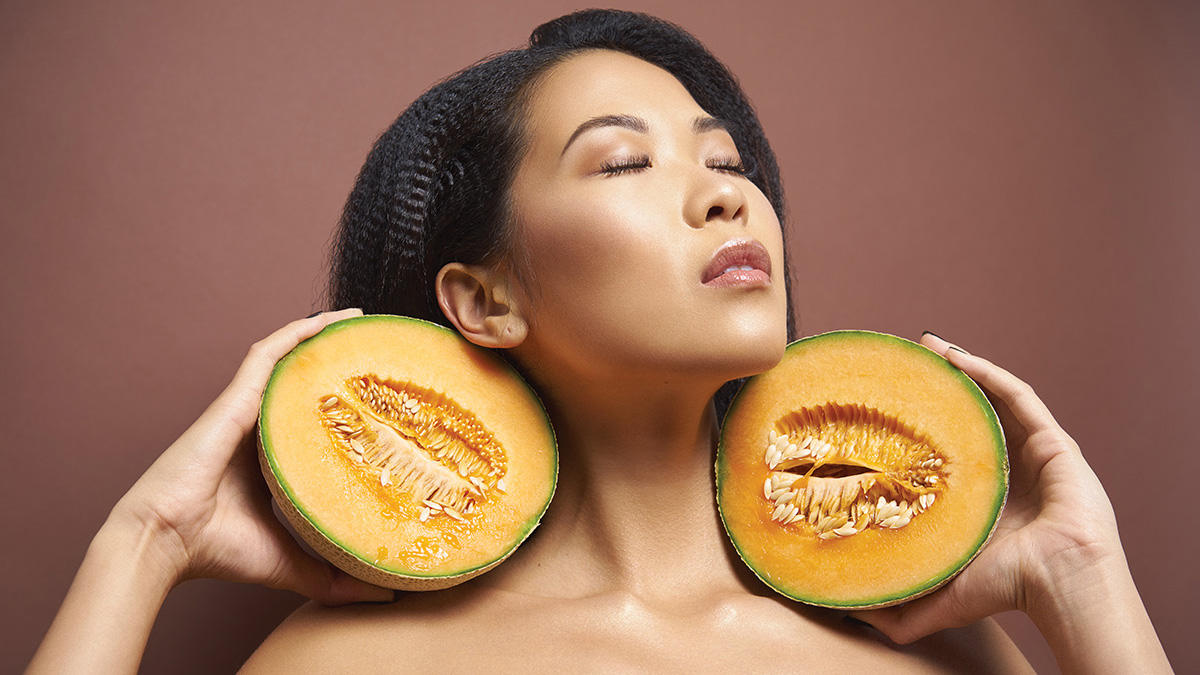
 View Gallery
View Gallery


